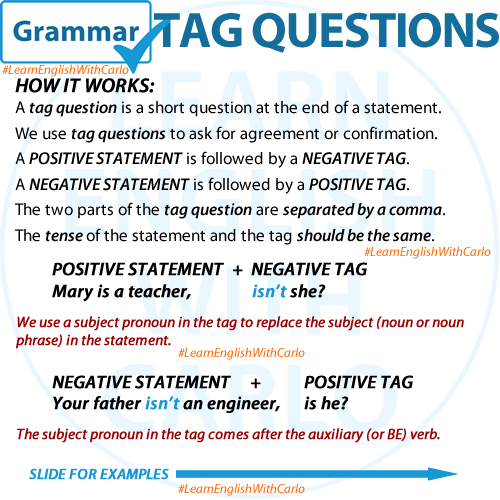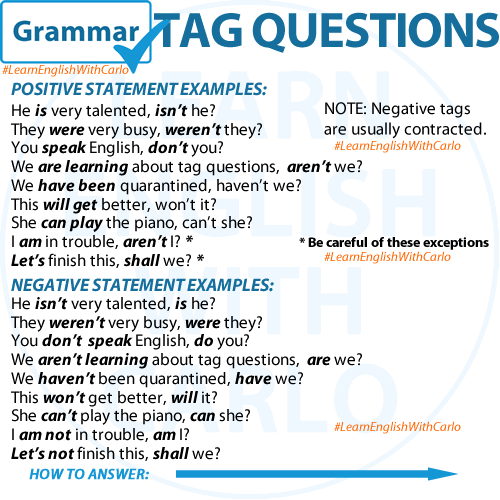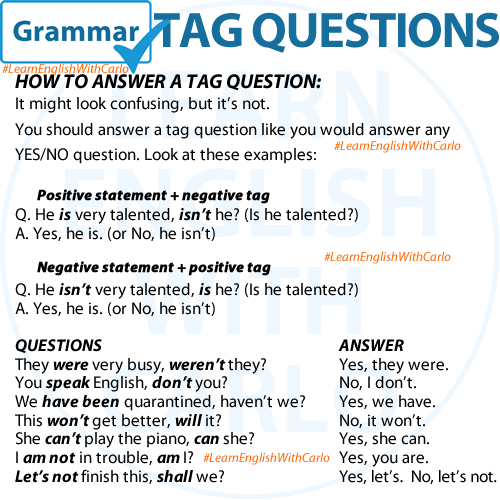A tag question is a short question added to the end of a statement. They are used to confirm information, seek agreement, or invite a response from the listener. Tag questions are characterized by their structure: they typically consist of an auxiliary verb and a pronoun that matches the subject of the statement.
For example:
- It’s a beautiful day, isn’t it? (Statement: It’s a beautiful day)
- You like chocolate, don’t you? (Statement: You like chocolate)
How to Form Tag Questions:
- Choose the Correct Auxiliary Verb: The auxiliary verb in the tag question should match the tense of the main verb in the statement. Common auxiliary verbs include “is,” “are,” “am,” “do,” “does,” “did,” “have,” “has,” “will,” and “can.”
- Match the Pronoun: The pronoun used in the tag question should match the subject of the statement. For example, if the subject is “she,” the tag question should use the pronoun “she” as well.
- Add the Negative or Positive Tag: Depending on the statement, the tag question can be positive or negative. If the statement is positive, the tag question is usually negative, and vice versa.
Examples:
- He is coming, isn’t he? (Positive statement, negative tag)
- She doesn’t like coffee, does she? (Negative statement, positive tag)
Common Tag Question Structures:
- Positive Statement ➡️ Negative Tag
- It’s raining, isn’t it?
- You’re from Italy, aren’t you?
- Negative Statement ➡️ Positive Tag
- They haven’t arrived yet, have they?
- You don’t speak Spanish, do you?
Using Intonation:
In spoken English, intonation plays a crucial role in conveying meaning. When using tag questions, rising intonation at the end of the statement suggests uncertainty or a genuine question, while falling intonation indicates more of a rhetorical question or an assumption.
For instance:
- You’ve finished your homework, haven’t you? (Rising intonation – seeking confirmation)
- She’s your sister, isn’t she? (Falling intonation – assuming agreement)



